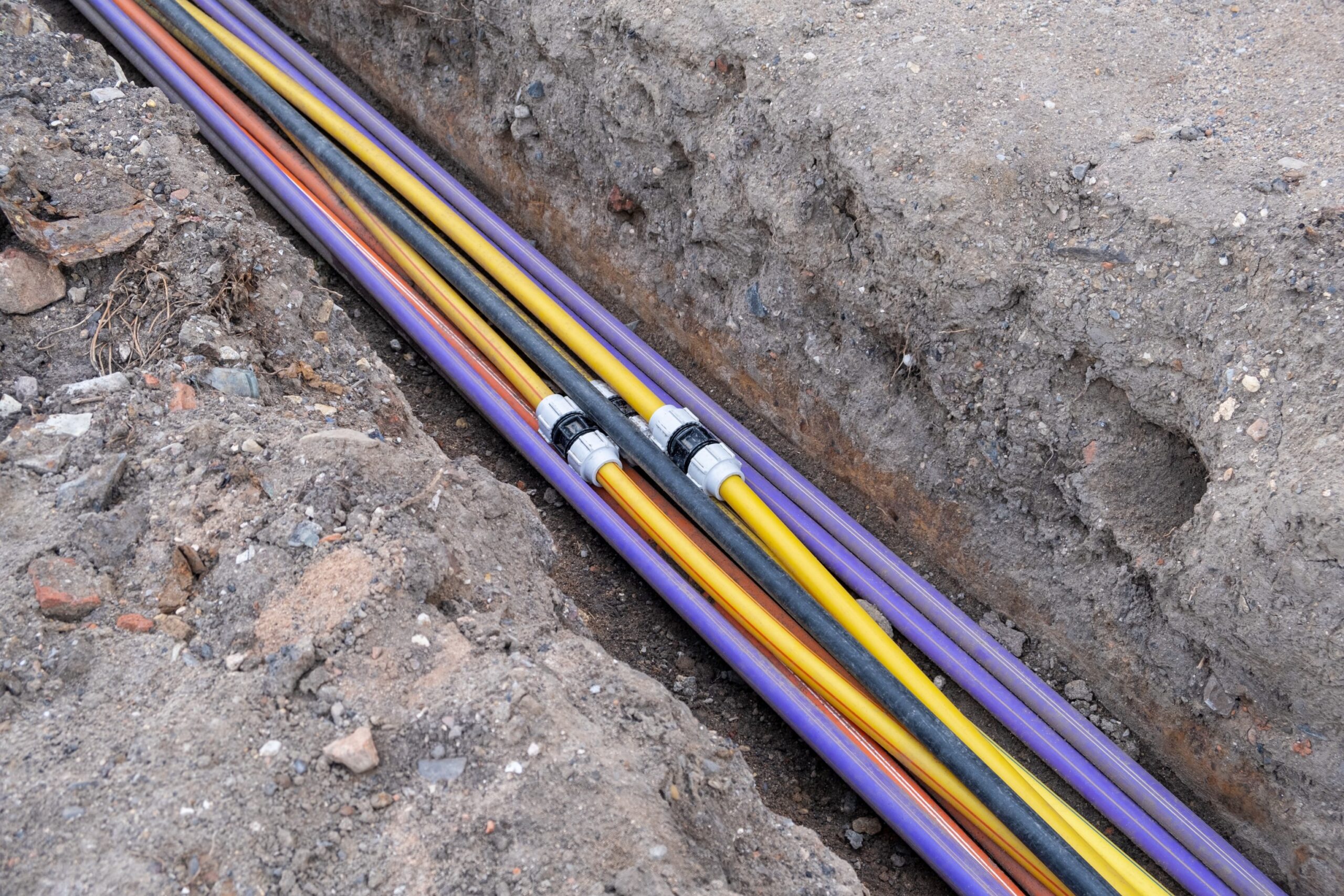Electrical trenching and excavation play a crucial role in the installation of electrical systems, ensuring a reliable and safe power supply across Ontario. As with any construction activity, these processes require careful consideration of regulations, safety measures, and environmental impact. In this blog, we will delve into the intricacies of Ontario’s regulations surrounding electrical trenching and excavation, shedding light on the importance of safety, compliance, and efficiency in these critical activities.
Overview of Electrical Trenching and Excavation
Trenching and excavation are fundamental components of electrical installations, involving the digging of trenches to lay electrical cables or other utilities underground. This method not only protects the electrical infrastructure from external elements but also minimizes visual impact and facilitates easier maintenance. Safety and compliance are paramount in these operations to safeguard both workers and the public, as well as to adhere to the stringent regulations set forth by Ontario’s governing bodies.
Ontario’s Specific Regulations
Ontario has established a comprehensive framework for electrical trenching and excavation work to ensure the highest standards of safety and quality. The Electrical Safety Authority (ESA) and the Ontario Electrical Safety Code (OESC) serve as key authorities overseeing these activities. It is essential for contractors and workers to familiarize themselves with these regulations, which cover everything from proper installation practices to equipment standards. Adherence to the codes set by ESA and OESC is not just a legal requirement but also a commitment to the well-being of the community.
Safety Measures and Best Practices
Safety is paramount in electrical trenching and excavation activities, and strict adherence to comprehensive safety measures and best practices is essential to mitigate potential hazards. Workers involved in these operations must be equipped with appropriate personal protective equipment (PPE), including hard hats, high-visibility clothing, and steel-toed boots, to safeguard against physical injuries. Adequate shoring and trench protection systems are crucial to prevent cave-ins and ensure the stability of excavation sites. Regular inspections of excavation equipment, such as trench boxes and shields, are imperative to identify and address any potential issues promptly. Clear communication through the implementation of a well-defined safety plan, including designated emergency procedures, ensures that everyone on-site is aware of potential risks and the necessary steps to take in case of an incident. Training programs focusing on safe work practices, hazard recognition, and emergency response further empower workers to carry out their tasks with diligence and confidence, fostering a culture of safety that is integral to the success of electrical trenching and excavation projects. PS: Check out our 5 safety tips for electrical trenching and excavation here for additional tips.
Environmental Considerations
Beyond safety, Ontario places a strong emphasis on environmental responsibility in construction activities. These activities have the potential to impact local ecosystems, water bodies, and the overall environment. Before initiating a project, thorough environmental impact assessments are essential, ensuring that the ecological balance is preserved. Obtaining the necessary permits and adhering to established procedures is critical to mitigate any potential harm. Contractors must work in harmony with the environment, employing practices that minimize disruption to soil, vegetation, and wildlife. By implementing erosion control measures, sedimentation controls, and other environmentally conscious strategies, electrical trenching and excavation projects can proceed with minimal ecological impact, contributing to the long-term sustainability of Ontario’s natural resources. This commitment to environmental stewardship not only aligns with regulatory requirements but also reflects a dedication to responsible construction practices that prioritize the health of the planet.
Technology and Innovations
The world of electrical trenching and excavation is not immune to technological advancements. Technology and innovations have significantly transformed the landscape of electrical trenching and excavating, ushering in a new era of efficiency and safety. Advanced machinery, such as GPS-guided excavators and laser-equipped trenching tools, has revolutionized the precision and accuracy of excavation processes. Ground-penetrating radar systems have become indispensable, allowing workers to map underground utilities with unprecedented clarity, minimizing the risk of accidental damage. Remote-controlled excavation equipment adds an extra layer of safety by enabling operators to work from a distance, particularly in hazardous or confined spaces. Additionally, the integration of telematics and data analytics has streamlined project management, providing real-time insights into equipment performance, maintenance needs, and project progress. These technological advancements not only enhance productivity but also contribute to minimizing environmental impact and improving overall project outcomes in the realm of electrical trenching and excavation.
Cost and Time Considerations
Cost and time considerations are pivotal aspects in the realm of electrical trenching and excavation projects in Ontario. The intricacies of these undertakings demand a meticulous examination of factors influencing both financial and temporal dimensions. Variables such as the extent of the excavation, soil conditions, and the need for specialized equipment significantly impact costs. Efficient project planning, including proper scheduling and resource allocation, is essential to ensure timely completion. Delays can arise from unforeseen challenges, weather conditions, or permit acquisition processes, emphasizing the importance of contingency planning. Striking a delicate balance between cost-effectiveness and meeting project deadlines is imperative, requiring project managers to assess and manage risks effectively. By carefully navigating these cost and time considerations, stakeholders can not only enhance project efficiency but also contribute to the overall success of electrical trenching and excavation endeavours in Ontario.
Navigating Ontario’s regulations for electrical trenching and excavation requires a comprehensive understanding of safety protocols, environmental considerations, and the ever-evolving landscape of technology. By adhering to these guidelines, contractors can not only meet legal requirements but also contribute to the creation of a safer, more sustainable, and efficient electrical infrastructure across the province. Interested in learning more? Check out our other blogs or give us a call anytime at 519-752-3675!






